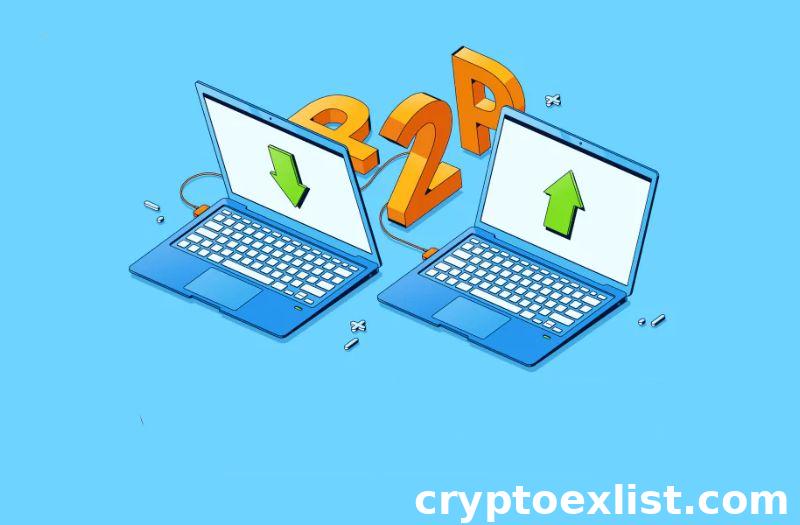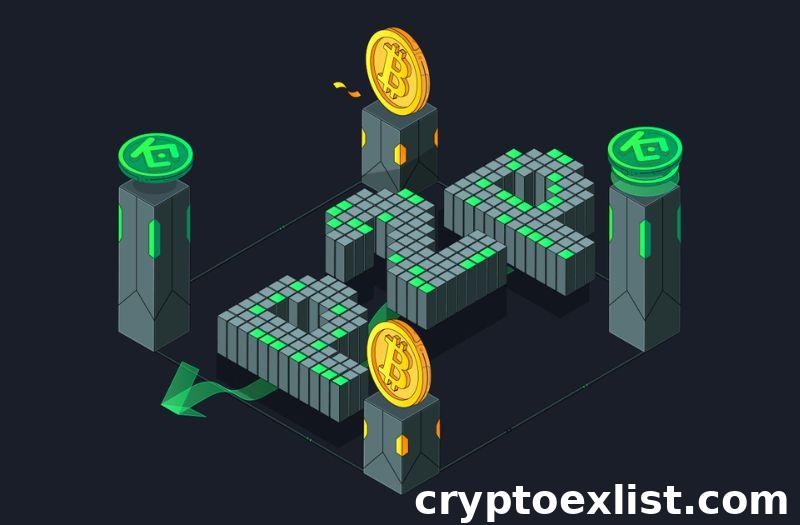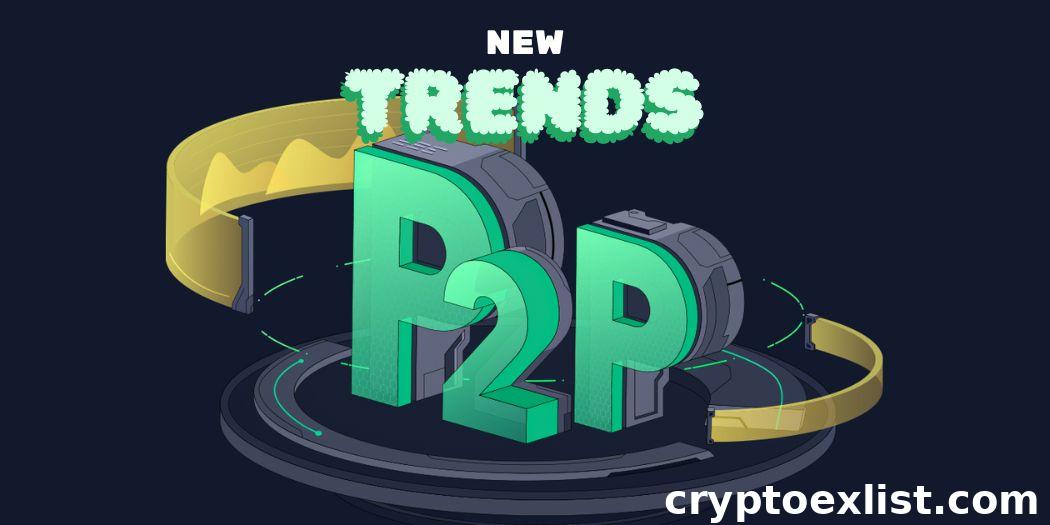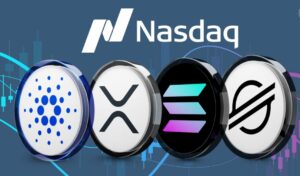
Peer-to-peer (P2P) trading is quickly becoming a cornerstone of the cryptocurrency market, offering users flexibility, lower fees, and greater control over their trades. With advancements in blockchain technology, the rise of smart contracts, and the integration of decentralized finance (DeFi) into P2P platforms, the landscape of P2P trading is constantly evolving. This blog explores the latest trends in P2P trading, from technological innovations to the impact of regulations and the growing influence of social media, providing valuable insights for both beginners and experienced traders.
Current Landscape of P2P Trading
Peer-to-peer (P2P) trading has grown significantly in recent years, especially as more individuals seek alternative ways to trade cryptocurrencies without relying on centralized exchanges. P2P trading platforms allow users to buy and sell digital assets directly with one another, offering flexibility, privacy, and often lower fees. As the cryptocurrency market expands, the landscape of P2P trading is evolving, with major platforms emerging and a diverse range of users participating. For beginners, understanding the key players and user behavior in this space is essential to making informed decisions about where and how to trade.
Major P2P Trading Platforms
There are several major platforms that dominate the P2P trading landscape, each offering its own set of features and benefits. Binance P2P is one of the most popular and widely used platforms, providing a secure environment with low fees and extensive payment options. It is favored by both new and experienced traders because of its user-friendly interface and built-in security measures, like escrow services and identity verification. Other notable platforms include Paxful and LocalBitcoins, which also allow users to trade directly with one another and offer a wide range of payment methods. These platforms have established themselves as key players in the P2P trading space by prioritizing user safety and offering a variety of cryptocurrencies for trading. Each platform caters to different user preferences, from ease of use to flexibility in payment options, making it crucial for beginners to choose a platform that aligns with their trading needs.
User Demographics and Behavior
The user base for P2P trading platforms is incredibly diverse, with participants ranging from cryptocurrency enthusiasts and investors to individuals in regions with limited access to traditional banking services. In regions where centralized exchanges face restrictions, such as parts of Africa and Southeast Asia, P2P trading has become a crucial way for individuals to access digital currencies and conduct financial transactions. Users on P2P platforms tend to value privacy and the ability to choose payment methods that are convenient for them, including bank transfers, mobile wallets, and even cash. Many users are drawn to P2P trading for the flexibility it offers, as it allows them to negotiate terms directly with other users. This behavior is reflected in the way trades are conducted, with users often seeking the best deals and building trust by verifying identities and trading histories before completing transactions.
For new users, it’s important to understand that the P2P trading landscape is shaped by a diverse, global community. User behavior varies widely depending on geographic location, access to payment systems, and trading preferences, but the common thread is a desire for control over transactions and lower fees. By recognizing these trends, newcomers can better navigate the P2P trading environment, choosing platforms and trading strategies that suit their needs.

Technological Innovations in P2P Trading
The world of Peer-to-Peer (P2P) trading is evolving rapidly, thanks to technological innovations that are making cryptocurrency transactions faster, more secure, and increasingly decentralized. For new traders, understanding these advancements can provide a clearer picture of why P2P trading is becoming such a popular choice. Two major technological developments—blockchain technology and the rise of smart contracts—are at the heart of this evolution, offering enhanced transparency, security, and autonomy for users.
Blockchain Technology Impact
Blockchain technology serves as the foundation of P2P trading, ensuring that transactions are secure, transparent, and decentralized. At its core, blockchain is a distributed ledger system where each transaction is recorded across multiple nodes (computers) in a network. This decentralization makes it nearly impossible for any single entity to alter or manipulate transaction records, which boosts trust and security among P2P traders. Platforms like Binance leverage blockchain technology to ensure that every trade is traceable, verifiable, and immutable, giving users confidence that their transactions are secure.
For beginners, the impact of blockchain on P2P trading is profound. Because there’s no need for a central authority or third-party intermediaries, traders have full control over their assets, and transaction fees are often lower. Blockchain also ensures transparency, as anyone can verify the history of a cryptocurrency, eliminating the risk of fraud or double-spending. These features make P2P trading more efficient and trustworthy, contributing to its increasing popularity among traders worldwide.
Rise of Smart Contracts
The rise of smart contracts has further revolutionized the P2P trading landscape by automating and securing transactions without the need for a middleman. A smart contract is a self-executing contract with the terms of the agreement directly written into code. Once the agreed-upon conditions are met, the contract automatically executes the trade, ensuring that both parties uphold their end of the bargain. This eliminates the need for trust between buyers and sellers, as the smart contract will only release funds or assets when the predefined conditions are fulfilled.

Decentralized Finance (DeFi) and P2P Trading
Decentralized Finance (DeFi) has been one of the most revolutionary movements in the cryptocurrency space, reshaping the way people interact with financial services by eliminating the need for traditional intermediaries. DeFi’s integration into Peer-to-Peer (P2P) trading platforms is further enhancing the autonomy and accessibility that these platforms offer to users. For beginners entering the world of P2P trading, understanding how DeFi is transforming this space is crucial to leveraging the full potential of decentralized trading.
Integration of DeFi into P2P Platforms
DeFi integration is changing the landscape of P2P trading by adding more decentralized features to the trading process itself. Traditional P2P platforms like Binance facilitate trades between users, but they still act as intermediaries through escrow services and centralized management. However, with DeFi, these platforms can offer more decentralized alternatives, such as smart contract-driven trades and decentralized escrow systems, where the transaction process is managed entirely through blockchain technology. This means that trades can happen without reliance on any central authority, making the process truly peer-to-peer.
For example, decentralized P2P platforms allow users to lock their cryptocurrency in smart contracts during the transaction, ensuring that assets are only released once the agreed conditions are met. This level of decentralization reduces the need for trust between users and further secures the transaction. For new traders, the integration of DeFi into P2P platforms means fewer intermediaries, potentially lower fees, and greater transparency in every trade.
Benefits of DeFi for P2P Trading Users
The integration of DeFi into P2P trading brings a host of benefits, making the trading experience more secure, flexible, and user-centric. One of the most significant advantages is the enhanced level of security provided by blockchain technology and smart contracts. Since DeFi operates on a decentralized network, it minimizes the risks of fraud, hacking, or tampering that can be associated with centralized platforms. For users, this means their assets are safeguarded in a more robust environment, where all transactions are immutable and transparent.
Another key benefit of DeFi in P2P trading is the increased flexibility. DeFi platforms allow users to trade assets beyond traditional cryptocurrencies, including tokenized assets or stablecoins, expanding the options available to traders. Additionally, DeFi enables liquidity pools, where users can contribute assets and earn rewards, making it easier for P2P traders to find buyers and sellers quickly. For newcomers, this flexibility opens up a world of opportunities to participate in decentralized trading markets and benefit from features like staking or yield farming while engaging in P2P transactions.
Regulatory Changes Affecting P2P Trading
The world of Peer-to-Peer (P2P) trading is constantly evolving, and one of the key factors shaping its future is regulatory changes. As governments and financial authorities around the globe become more involved in the regulation of cryptocurrency markets, P2P platforms like Binance are adapting to ensure compliance while maintaining the flexibility and security that users love. For new traders, understanding the global regulatory landscape and how it affects P2P trading is essential to navigating this dynamic space with confidence.
Global Regulatory Landscape
The global regulatory landscape for P2P trading varies significantly from one region to another. In some countries, cryptocurrency trading, including P2P, is fully embraced with clear regulations designed to protect users and prevent illegal activities like money laundering. For example, the European Union and the United States have implemented Know Your Customer (KYC) and Anti-Money Laundering (AML) policies that require P2P platforms to verify the identities of their users, ensuring a more secure trading environment.
In contrast, some countries have placed stricter controls on cryptocurrency trading, with outright bans in regions like China or highly regulated environments like India. These regulatory differences can impact how users access and interact with P2P platforms. For beginners, it’s crucial to stay informed about your country’s stance on cryptocurrency and P2P trading, as these regulations could affect the availability of platforms like Binance or the way you conduct trades.
Effects of Regulation on User Trust
One of the positive effects of increased regulation in P2P trading is the boost in user trust. As platforms like Binance comply with KYC and AML requirements, users feel more secure knowing that the people they’re trading with have been verified. This added layer of security helps prevent fraud and scams, which have historically been concern in decentralized markets. For new users, these regulations provide peace of mind, making it easier to trade with confidence, knowing that the platform operates within a legal framework designed to protect their interests.
The Role of Social Media in P2P Trading
Social media has become a powerful tool in the cryptocurrency world, and its influence on Peer-to-Peer (P2P) trading is undeniable. Platforms like Binance are increasingly integrating social media strategies to engage users, promote transparency, and build trust within the community. For newcomers to P2P trading, understanding the role of social media can enhance your trading experience by connecting you with valuable resources, influencers, and communities that make navigating the crypto landscape easier.
Influencer Marketing in P2P Platforms
Influencer marketing has become a key component in promoting P2P trading platforms like Binance. Influencers, whether they are cryptocurrency experts, finance bloggers, or YouTubers, help demystify the process of P2P trading for beginners by sharing insights, tutorials, and reviews of different platforms. These influencers often have large, dedicated followings, and their endorsement can lend credibility to a platform or trading strategy. For new users, following trusted crypto influencers can be a great way to learn about best practices, security measures, and how to get the most out of P2P trading. Whether it’s a video guide on setting up your Binance P2P account or a blog post explaining current market trends, influencers are instrumental in shaping the trading decisions of their audiences.
For P2P platforms, working with influencers allows them to reach a wider audience, particularly those who might be hesitant to try P2P trading due to concerns about security or complexity. By breaking down these barriers, influencers make P2P trading more approachable and accessible for everyone, from seasoned traders to those just starting their crypto journey.
Community Building and User Engagement
Social media also plays a critical role in community building and user engagement for P2P trading platforms. Platforms like Binance are known for fostering active communities on channels such as Twitter, Telegram, and Reddit, where users can share their experiences, ask questions, and discuss strategies. These online communities provide a support network for traders, particularly beginners who may need advice on how to complete transactions securely, understand market trends, or resolve issues with trades. Being part of these communities not only enhances your knowledge of P2P trading but also keeps you up-to-date on the latest developments in the crypto space.

Future Outlook for P2P Trading
Peer-to-peer (P2P) trading is rapidly gaining traction as a preferred method for buying and selling cryptocurrency. As the cryptocurrency market continues to evolve, the future of P2P trading looks bright, driven by increased user interest, technological advancements, and growing global adoption. For newcomers to P2P trading, understanding the potential market growth and long-term trends can provide valuable insights into what to expect and how to position yourself for success in this expanding space.
Predictions for Market Growth
The market for P2P trading is expected to grow significantly in the coming years, fueled by the increasing demand for decentralized financial solutions and the global shift toward digital assets. As more individuals recognize the benefits of P2P trading—such as lower fees, flexible payment options, and greater control over transactions—platforms like Binance P2P are likely to see a surge in user activity. Analysts predict that the rise of decentralized finance (DeFi) will further bolster P2P trading, as users seek more autonomous and secure ways to exchange cryptocurrencies without relying on centralized exchanges.
Additionally, regions with limited access to traditional banking systems are expected to be at the forefront of this growth. In places like Africa, Southeast Asia, and Latin America, P2P trading offers a lifeline for users looking to enter the digital economy and bypass financial barriers. As a result, we can expect to see P2P trading platforms expand their services and features to meet the growing demand, particularly in emerging markets. For new traders, this means more opportunities to engage in P2P transactions, not just locally but globally, as the market continues to thrive.
Long-term Implications of Current Trends
The current trends in P2P trading suggest a long-term shift toward a more decentralized and user-controlled financial ecosystem. As regulatory frameworks for cryptocurrency evolve and platforms like Binance adapt to new legal requirements, P2P trading is likely to become even more secure and mainstream. This could lead to a more widespread adoption of digital currencies, as both institutional and retail investors recognize the advantages of decentralized trading models.
Furthermore, innovations in blockchain technology, smart contracts, and security protocols will continue to shape the future of P2P trading. We are already seeing how advancements like smart contracts are automating and securing transactions, removing the need for third-party intermediaries. This trend is expected to continue, making P2P trading even more efficient and transparent. For beginners, these long-term implications mean that starting your P2P trading journey today puts you at the forefront of a financial revolution that is likely to redefine how people trade and interact with money in the future.
Conclusion
The world of P2P trading is rapidly transforming, driven by technological innovation, regulatory shifts, and increasing user engagement through social media. As platforms like Binance P2P continue to evolve, embracing trends like DeFi integration and the use of smart contracts, traders can expect a more secure, flexible, and user-driven experience. For newcomers to P2P trading, staying informed about these developments will not only enhance your understanding but also help you capitalize on emerging opportunities in this growing market. The future of P2P trading looks bright, and now is the perfect time to dive in and explore its potential.























